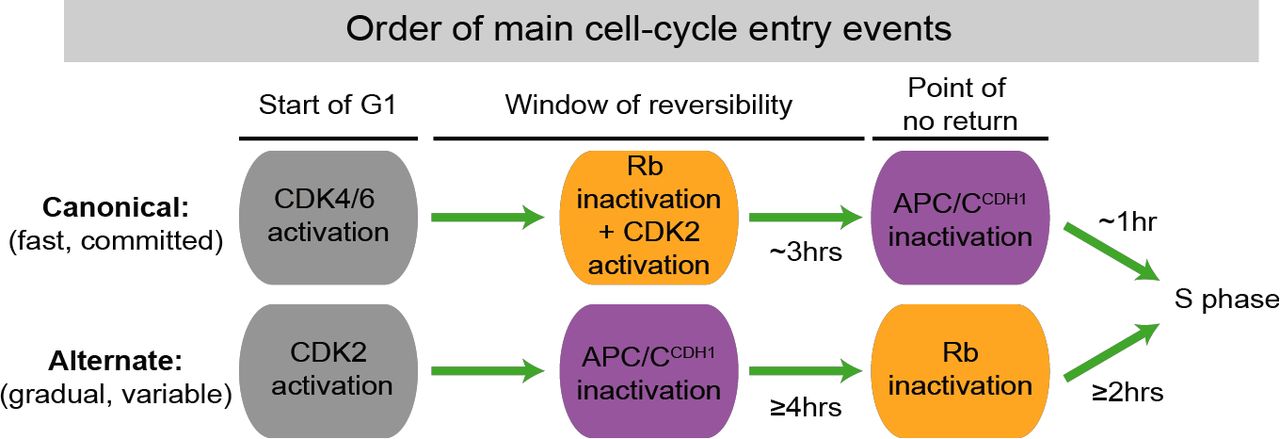Chad’s paper is up on BiorXiv!
April 4, 2019

A parallel cell-cycle entry pathway with inverted G1 signaling and alternate point of no return
Cell-cycle entry relies on an orderly progression of signaling events. To start, cells first activate the kinase cyclin D-CDK4/6, which leads to eventual inactivation of the retinoblastoma protein Rb. Hours later, cells inactivate APC/CCDH1 and cross the final commitment point. However, many cells with genetically deleted cyclin Ds, which activate and confer specificity to CDK4/6, can compensate and proliferate. Despite its importance in cancer, how this alternate pathway operates and whether wild-type cells use this pathway remain unknown. Here, using single-cell microscopy, we demonstrate that cells with acutely inhibited CDK4/6 enter the cell cycle with slowed and fluctuating cyclin E-CDK2 activity. Surprisingly, in this alternate pathway, the order of APC/CCDH1 and Rb inactivation is inverted in both cell lines and wild-type mice. Finally, we show that as a consequence of the signaling inversion, Rb inactivation replaces APC/CCDH1inactivation as the point of no return. Together, we provide molecular characterization of a parallel cell-cycle entry pathway, and reveal temporal plasticity that underlies the G1 regulatory circuit.
